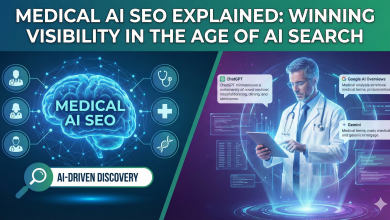
We’re witnessing the natural evolution of enterprise computing. For years, organizations have been pushing computation closer to where data is generated—what we’ve come to know as edge computing. Now, with AI capabilities maturing and becoming more accessible, edge AI represents the logical next step: a smarter, faster and more cost-effective way to make sense of the massive amounts of data being generated at the edge.
Don’t take my word for it. We recently surveyed 301 US CIOs and discovered something remarkable: 97% of enterprises are either already deploying Edge AI or have concrete plans to do so. Whether organizations call it edge AI, AI at the edge or simply advanced edge computing, the trend is clear—this isn’t theoretical technology gathering dust in R&D labs.
Why Is Edge AI Becoming Mission-Critical?
What’s fueling this rapid adoption? When we asked CIOs directly why they’re investing in Edge AI versus cloud-based alternatives, their responses were clear: security and data privacy topped the list at 53%, followed by improving customer experience (42%) and optimizing operational efficiency (39%).
These priorities signal a growing recognition that our cloud-centric model of computing, revolutionary as it has been, simply can’t address every computing need. Think about it: real-time processing requirements, data privacy concerns, operations in remote locations with limited connectivity, bandwidth constraints—these are all scenarios where the traditional cloud model falls short and won’t deliver AI capabilities. Edge AI fills these critical gaps.
Security stands out as particularly crucial. As organizations deploy increasingly sophisticated IoT sensors, smart cameras, and connected industrial equipment, the sensitive nature of the data they generate demands protection. Edge AI delivers a structural advantage by keeping sensitive data local, which reduces the attack surface and limits potential exposure of your most valuable information.
Yet this security advantage creates an interesting paradox. The same CIOs who cited security and privacy as the primary driver also identified security risks and data protection concerns (42%) as their top challenge. This highlights exactly why we need purpose-built solutions that deliver on Edge AI’s security promise.
Transforming Customer Experience at the Edge
While security may motivate Edge AI adoption, customer experience represents its most widely implemented use case. An impressive 80% of CIOs with Edge AI deployments are using it to enhance customer experiences, from retail store operations and display personalization to quality control.
The versatility of edge AI continues to surprise us. Take the car wash industry—not typically associated with cutting-edge technology. Forward-thinking companies in this space, like Sonny’s, The Car Wash Factory, are discovering how edge AI can optimize operations, from managing equipment performance and predicting maintenance needs to enhancing customer experiences through personalized service delivery. These unexpected applications demonstrate that edge AI’s value extends far beyond traditional tech-heavy industries.
The reason is straightforward: customer experience increasingly depends on systems that can respond instantly, even when network connectivity is compromised. Cloud-centric models introduce latency that customers notice and have bandwidth requirements that may not always be available. Edge AI ensures consistent, responsive experiences regardless of connectivity challenges.
SLB, a global energy technology company, exemplifies this transformation. The company has integrated our platform into their edge AI and IoT solutions to enable real-time data processing and analysis in the field. Their use cases—from wireline and drilling operations to mobile data analysis in remote locations—demonstrate how edge AI enables real-time decision making for safety and efficiency, even in harsh environments with intermittent connectivity or air-gapped operations when explosives are in use.
Edge and Cloud: Better Together
While the finding that CIOs see edge AI as a strategic complement to the cloud comes as no surprise—over half (54%) confirmed this hybrid approach—what’s truly interesting is the remarkable diversity in how organizations are implementing these strategies.
The data reveals no single dominant pattern. While 22% run both training and inference at the edge, others take different approaches: 15% run inference at the edge with training in the cloud, and 18% use a hybrid approach with selective models trained at the edge.
What’s clear is that there is no dominant pattern to how edge AI, alongside the cloud, gets deployed. Organizations are experimenting with different configurations based on their specific use cases, infrastructure constraints and operational requirements. Whether a de facto pattern will emerge remains to be seen—we’re still in the early innings here.
This experimental phase creates its own challenges. Over a third (37%) of CIOs cite a talent shortage with Edge AI expertise as a major hurdle, partly because best practices are still being established across such diverse deployment models.
Breaking Through Operational Barriers
As organizations move from pilots to production, the operational realities of Edge AI come into sharp focus. High operational and maintenance costs ranked as the second-biggest challenge (40%), followed closely by finding the right technology partners (37%).
These challenges are driving investment. Edge AI budgets are increasing in 2025 compared to 2024, with 90% of organizations reporting some increase. This signals strong confidence in Edge AI’s value while acknowledging the operational complexity that must be addressed.
Organizations need a fundamentally different approach to edge computing—one that simplifies deployment, automates management, and provides enterprise-grade security across distributed environments. This means platforms that can deploy AI models alongside other applications, provide zero-touch centralized management across thousands of edge locations, and seamlessly integrate with cloud services while maintaining secure-by-design infrastructure. Traditional tools designed for cloud environments simply can’t handle the unique requirements of edge computing at scale.
This is precisely why we recently enhanced our integration with NVIDIA’s edge AI platform, providing enterprises with a complete workflow for deploying, securing, and managing AI models at the edge. By enabling organizations to pull models from NVIDIA’s NGC catalog, optimize them with the TAO toolkit, and deploy them through a secure edge computing platform, we’re bridging the gap between Edge AI’s promise and the operational reality.
Edge AI’s Expanding Horizons
While manufacturing, energy, retail, and transportation have been early adopters, we’re now seeing compelling use cases emerge in telecommunications, healthcare, and robotics—three verticals with enormous potential.
In telecommunications, Edge AI enables real-time processing of signals and data where bandwidth is constrained and latency is critical. In healthcare, it enables patient monitoring and diagnostic systems that maintain privacy while providing immediate analysis. And in robotics, Edge AI powers autonomous systems that must make split-second decisions based on their environment.
According to Gartner, 30% of enterprises will be using edge computing platform software for their architecture by 2029, and at least 60% of edge deployments will use composite AI (both predictive and generative AI) by that time. The future is distributed, and Edge AI is leading the way.
The Next Computing Revolution Is Here
The evidence is clear: Edge AI is rapidly becoming critical infrastructure for enterprises across industries. The significant budgets being allocated, the widespread deployment already underway, and the strategic importance organizations are placing on Edge AI all point to a future where computing is increasingly distributed, intelligent, and secure.
For business leaders navigating this transformation, the message is simple: Edge AI isn’t just another technology initiative—it’s a fundamental shift in how your enterprise collects, processes, and acts on data. Organizations that recognize this shift and adapt their technology strategies now will lead in the next era of computing—one that balances cloud and edge capabilities to deliver unprecedented security, customer experience, and operational efficiency.
The edge is where the physical and digital worlds meet—and increasingly, it’s where your competitive advantage will be determined.



